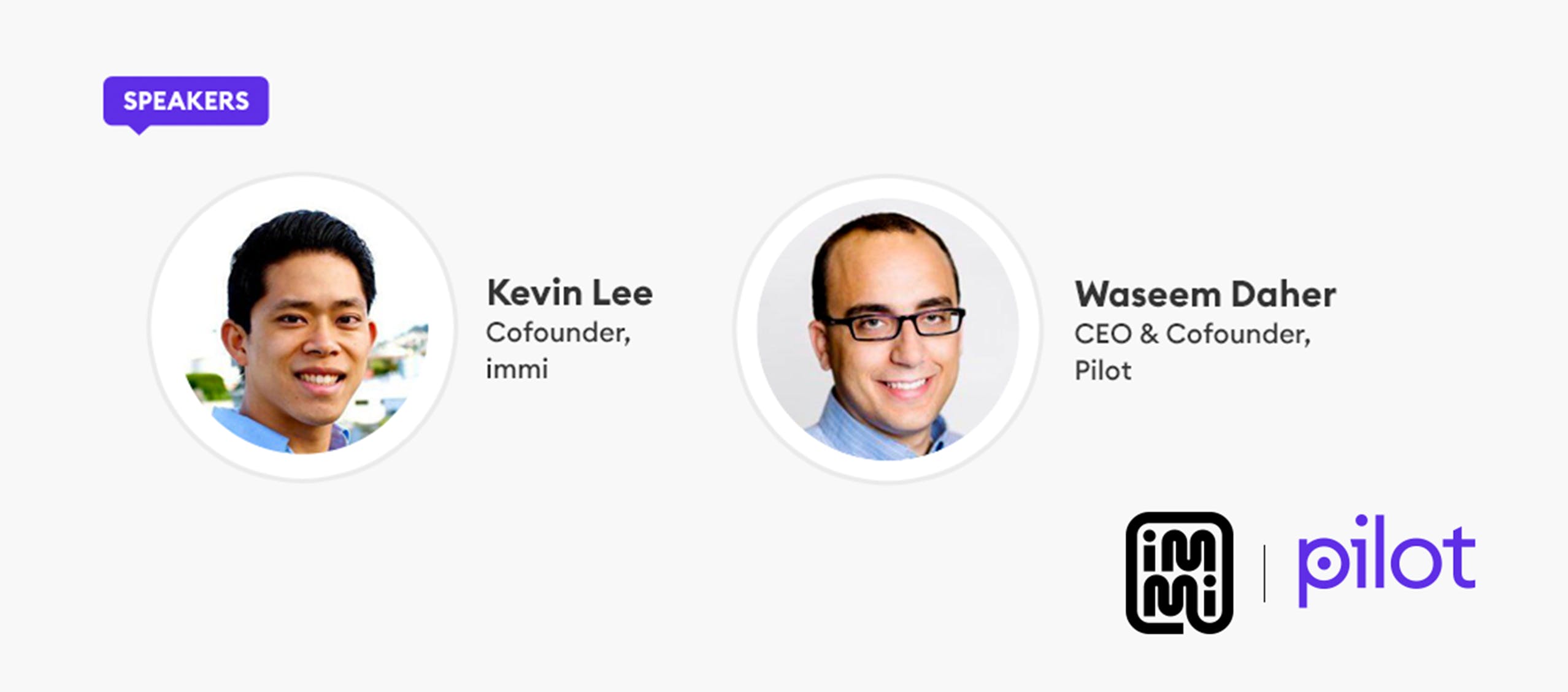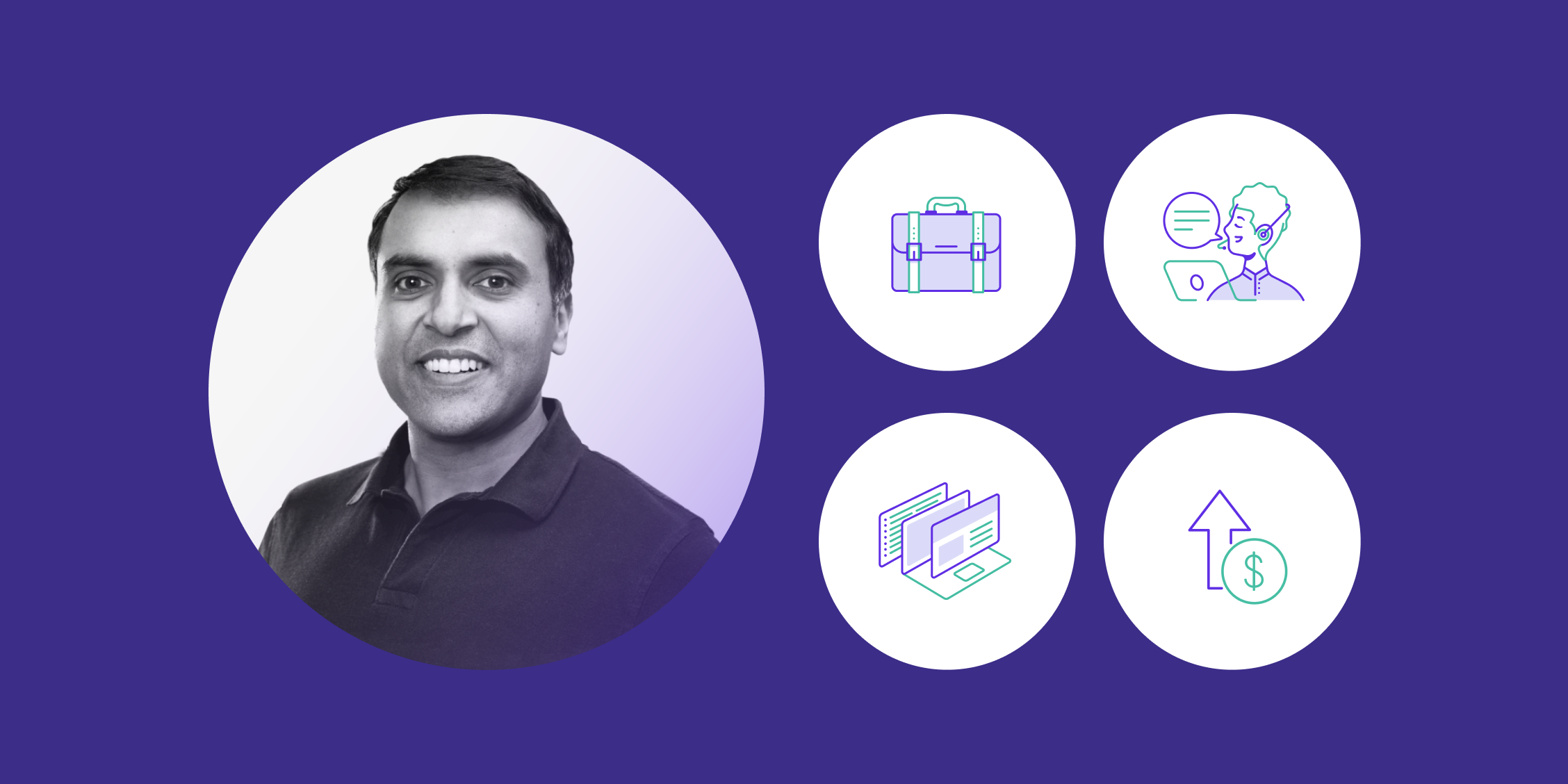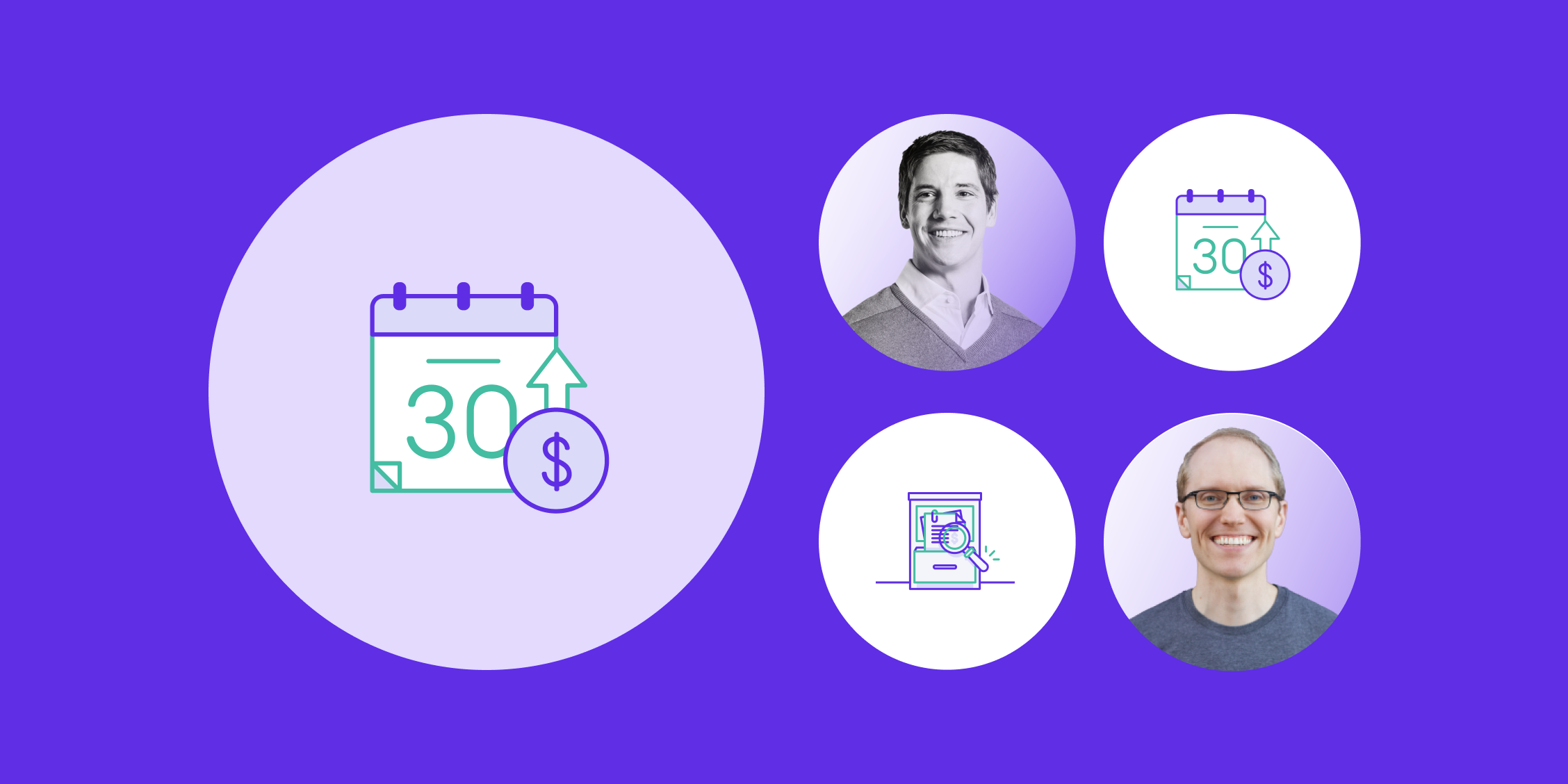Startup Stories: How immi Is Disrupting the $42B Ramen Industry
A confirmation email has been sent to your email.

The world’s first low-carb, high-protein instant ramen, immi is on a mission to enrich lives with the vibrant world of Asian American food and disrupt the $42 billion dollars instant noodle industry. They’re off to a strong start – before immi publicly launched, they had a 35,000 person email waitlist and a 3,700 member beta community.
immi co-founder Kevin Lee recently sat down with Pilot co-founder and CEO Waseem Daher to talk about founding immi, building an audience, and more. Read excerpts from the discussion below, and watch the entire 43-minute interview here.
On the Idea for immi
Waseem Daher
We talked about this a little bit earlier, but I’d love to sort of hear about your background and kind of how you got into the world of food in the first place.
Kevin Lee
Yeah, it’s an “easier-to-connect-the-dots-moving-backwards” type story. But I think going back to my family history, so my grandparents are actually produce farmers in Taiwan. And a lot of my childhood was actually spent with them, quite literally in the fields, picking, stemming packaging this fruit called a rose apple. And so, my parents actually immigrated here to the U.S. where they didn’t want me to be in the food industry, frankly. And ironically, I kind of came back full circle and ended up in this space.
But the past 10 years, I’ve actually been in the tech industry, so I was kind of rotating between Product Management at tech companies and then later moved into early stage venture capital. But a couple of years ago, a friend who I had met around 10 years ago at the same company, we were both Product Managers at this gaming company called Kabam. We both discovered that we came from similar backgrounds, so his grandmother sold noodles in a Hawker stall in Thailand, his dad opened a Thai restaurant in L.A. selling noodles.
And the thing that we unfortunately noticed was that in recent years, as we’ve gotten older, our families have just gotten sicker from chronic health conditions. So, my grandmother is pre-diabetic. She had a stroke from hypertension that left her half-paralyzed. And both my parents have taken medication for high blood pressure for over a decade. And when you look at healthcare costs in America, it’s ballooned to a point where you kind of realize, “Hey, look, if we were able to fix kind of the nutrition, the diets, the eating lifestyle problem, you would probably prevent a lot of the costs that go into the U.S. healthcare system.
And so, my co-founder and I decided, “Hey, well, why don’t we work on a better-for-you food and beverage brand, tying in our Asian-American roots?” So, that was kind of the concept behind immi and specifically with ramen. That kind of came a little bit naturally.
On Advice for Food & Beverage Founders
Waseem Daher
So at Pear you led consumer food and beverage investing. Now, you’re sitting on the other side of the table. Any advice to give now that you’ve had the experience as an investor and a founder in this space?
Kevin Lee
Great question. I think the first thing is and this is actually applicable to most industries. A lot of times, in food and beverage, we do meet that kind of the traditional food founder who’s like, “Oh, they had a grandma’s recipe passed down to them. People suggested that they productize this, sell it to the masses.” And then they quickly realize that there’s not as much demand outside of their immediate friend or family network. And so, it’s absolutely critical to do demand testing, at least in my opinion within food and beverage for a brand new concept that you’re trying to test.
And so, for us, before we built this product, [when] we just had the idea, we built a landing page with Unbounce. We integrated a widget called Celery. It was trycelery.com. I think they’ve since sunsetted the product, unfortunately. But it allowed you to actually collect preorders and it would hold their payment in escrow, at which point you would of course refund them. We were able to do some demand testing effectively and verify that there were people interested in converting, people who put their credit card down.
We would’ve emailed anyone who pre-ordered and we’d say, “Hey, just curious why you’re interested in buying this product.” We just wanted to do some qualitative interviews effectively. And then a very simple question, which is, “Hey, we don’t have the product ready, would you like us to refund you now?” And we discovered that something like 50% of the people were like, “No, hold on to my money. I really want this product. Whenever you’re ready just ship it to me.” And I think that’s as indicative as it can get around like, “Hey, there are people interested in this product.”
On Building a Brand Following
Waseem Daher
So, you built that 3,700 member beta community, it sounds like a Facebook group or something. What did you do to actually engage with the community? I’m curious to learn a little bit more about how you’ve nurtured that.
Kevin Lee
Yeah, it’s interesting in the early days, there wasn’t, I mean, truthfully, there’s nothing really fancy about this idea of building in public with your community. People think that we have like spreadsheets with content plans or they’re categorized and they’re queued up. A lot of it was really just sharing the behind the scenes of, “Hey, here’s us two in the kitchen. Here’s us shaking a bag of flour and mixing it together or here’s us driving to this storage facility to check out the storage for the first time.”
It’s no different. I think the thing I realized about startups and even in tech is like when I was a product manager and I was joining a company for the first time, and there were like, let’s say, three product managers before me, there’s a lot of institutional knowledge that gets locked in people’s heads. And you kind of forget about it, because yeah, there might be some documentation, but you as a PM, you might start working on something and then you only realize later from talking to your other teams, they’re like, “Oh, two PMs before you, someone has already tried that.” And no one documented that story.
And I think the fun thing about food and beverage is these stories, which are effectively the company history, when you document these, these are interesting things that people love seeing. And it’s not just within the company that you should be sharing these with other employees, it’s the public, because the public wants to see the process by which you got to that final point. And so, this beta community ended up actually becoming an archive of historical moments and stories in this company’s lifecycle where we were like, “Okay, well, let’s treat this like our company Wiki, but it happens to be open for community members to also see what’s going on.”
And luckily or not luckily, that just happened to also be the thing that resonated where we had crazy high engagement when it was just a photo of me and KChan eating ramen or I literally had a bowl where I was like, “Hey, I’m not eating immi, but I’m eating a bowl of udon noodles.” And I put some mushrooms on it and it had one of the highest engagements where people are like, “Oh my God, that’s how you prepare your udon? Here’s how I do mine.” And you’re just creating moments where people can connect and share and talk about you moments in their life as well.
And so, we did a lot of behind the scenes posts. We did intersperse it with some Q&A. I started polls and so we would poll people on like, “Hey, we’re thinking about doing a noodle that might be anywhere from 9 to 12 grams of net carbs. What is your preference?” And then people would poll and then put comments and you could learn that way. Sometimes we’d say, “Hey, we’re looking for some people to interview,” to just ask them questions, and so, it’s a quick way to get some user interviews.


